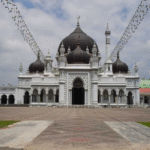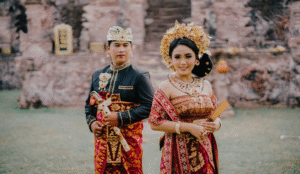The Story of Puteri Gunung Ledang: A Timeless Malaysian Legend
Malaysia is home to a rich tapestry of myths, legends, and folklore that reveal its deep cultural roots and timeless wisdom. Among these enchanting tales, none stands out more than Puteri Gunung Ledang — a story of unrequited love, mystical beauty, and moral reflection that continues to captivate generations. This tale, deeply woven into Malaysia’s heritage, has inspired songs, films, stage plays, and even modern adaptations. But beyond the romantic tragedy lies a profound cultural message about power, pride, and the human heart.
Frequently Asked Questions (FAQ)
1. What is Puteri Gunung Ledang famous for?
Puteri Gunung Ledang is famous for being one of Malaysia’s most legendary figures — a mystical princess who lived atop Mount Ledang. Her story centers on her rejection of Sultan Mahmud Shah’s marriage proposal through seven impossible conditions, symbolizing wisdom, independence, and moral integrity. She remains a beloved icon in Malaysian folklore, representing beauty, intelligence, and strength.
2. What is the myth of Gunung Ledang?
The myth of Gunung Ledang tells of a celestial princess residing on the mountain, who was courted by the Sultan of Malacca. To test his sincerity, she demanded seven unattainable items, including a bowl of her suitor’s son’s blood. The myth highlights lessons about human greed, ambition, and humility — core values found in many Malaysia myths and legends.
3. What are the lessons from the legend of Puteri Gunung Ledang?
The legend teaches that true love and leadership require humility, compassion, and moral integrity. It warns against the dangers of unchecked ambition and pride, showing that wisdom and virtue outweigh wealth and power. Puteri Gunung Ledang also embodies feminine empowerment, as she chose autonomy over submission, making her a symbol of self-respect and strength.
4. Who wanted to marry Puteri Gunung Ledang?
According to the story, Sultan Mahmud Shah, the ruler of the Malacca Sultanate, sought to marry Puteri Gunung Ledang after hearing of her unmatched beauty. His envoys climbed Mount Ledang to deliver his proposal, but the princess’s seven impossible conditions ultimately revealed the limits of his desire and the depth of her wisdom.
5. What are the mysteries of Gunung Padang?
While often confused with Mount Ledang, Gunung Padang is another ancient site in Southeast Asia known for its megalithic structures and mysterious origins. Some believe it predates known civilizations and holds spiritual energy like that attributed to Mount Ledang. Both places evoke wonder and fascination, serving as reminders of the region’s deep connection to myth and the unseen world.
The Origins of the Legend
The Setting: Mount Ledang’s Mystical Presence
Rising majestically on the border between Johor and Malacca, Mount Ledang is more than just a mountain — it’s a symbol of mystery and spiritual allure. Known for its lush forests, cool mist, and serene waterfalls, it has long been considered a sacred site by locals. Many believe the mountain holds ancient spirits and supernatural beings. The setting plays a crucial role in the story of Puteri Gunung Ledang, serving as both her sanctuary and the backdrop of the Sultan’s impossible quest.
The Historical Context: The Malacca Sultanate
The tale is often set during the reign of Sultan Mahmud Shah, the last ruler of the Malacca Sultanate in the late 15th century. During his rule, Malacca was a bustling center of trade, culture, and diplomacy. However, political unrest and foreign threats loomed large. It was in this era of grandeur and turmoil that the Sultan’s desire for the elusive princess took shape — symbolizing ambition, pride, and the yearning for perfection.
The Princess on the Mountain
Who Was Puteri Gunung Ledang?
Puteri Gunung Ledang, often translated as “The Princess of Mount Ledang,” is said to be a celestial being of unparalleled beauty. Descriptions of her vary across oral traditions: some say she descended from the heavens, while others claim she was a powerful spirit guarding the mountain. Regardless of interpretation, she symbolizes beauty, grace, and independence — traits that make her one of Malaysia’s most admired mythical figures.
A Meeting of Worlds
According to legend, the princess lived a peaceful life on Mount Ledang, surrounded by nature and divine guardians. Her serenity was disrupted when Sultan Mahmud Shah, hearing tales of her beauty, became determined to make her his queen. Driven by desire and pride, the Sultan sent his emissaries — Tun Mamat and Tun Aria Duta — to ascend Mount Ledang and deliver his royal proposal. What they encountered, however, was not merely a princess, but a test of character and virtue.
The Sultan’s Proposal and the Seven Impossible Conditions
When the Sultan’s envoys reached the princess, they were awestruck by her ethereal beauty. Yet, she did not accept the Sultan’s proposal outright. Instead, she presented seven conditions — each more impossible than the last — as the price for her hand in marriage:
- A bridge of gold from Mount Ledang to Malacca
- A bridge of silver from Malacca to Mount Ledang
- Seven trays of mosquito hearts
- Seven trays of the hearts of germs
- Seven jars of betel nut juice
- Seven jars of virgin’s tears
- A bowl of the Sultan’s son’s blood
The Symbolism Behind the Demands
Each condition carried profound meaning. The golden and silver bridges represented greed and human ambition; the trays of hearts and tears symbolized sacrifice and sorrow. The final request — a bowl of royal blood — was the ultimate test of compassion and morality. Through these demands, Puteri Gunung Ledang exposed the depth of the Sultan’s desire and the limits of his humanity.
The Moral of the Story
A Lesson in Humility and Desire
The Sultan’s journey to win the princess’s love ultimately revealed his flaws. When faced with the final demand — the blood of his own son — he realized that his quest was fueled not by love, but by pride. Overcome with guilt and regret, he abandoned the pursuit. The legend thus serves as a powerful moral tale about humility, restraint, and the dangers of excessive ambition.
The Princess’s Wisdom
Puteri Gunung Ledang embodies wisdom and virtue. By setting impossible conditions, she not only protected her autonomy but also taught the Sultan a lesson about true love and moral integrity. Her decision to remain on Mount Ledang reflects her independence and refusal to be possessed — a progressive message that resonates even in today’s world.
Cultural Significance and Symbolism
A Reflection of Malay Values
The story reflects core Malay cultural values such as respect, humility, and moral responsibility. It emphasizes that true leadership requires not just power, but compassion and wisdom. Puteri Gunung Ledang also represents the concept of “budi” — inner grace and intelligence — which is highly esteemed in Malay culture.
Spiritual and Environmental Connection
Mount Ledang, often shrouded in mist, serves as a symbol of mystery and purity. The mountain’s connection to the divine echoes the traditional belief that nature is sacred and interconnected with human life. Even today, pilgrims and hikers feel a sense of reverence when ascending Mount Ledang, as if stepping into the realm of the princess herself.
From Folklore to Modern Media
Literary Adaptations
The legend has been retold countless times in Malay literature, from the Sejarah Melayu (Malay Annals) to modern novels. Each version carries a slightly different interpretation, emphasizing different moral or romantic themes. These retellings help preserve the story’s relevance while adapting it to modern audiences.
Film and Theatre Interpretations
The 2004 Malaysian film Puteri Gunung Ledang, starring Tiara Jacquelina, brought the legend to life with breathtaking visuals and emotional depth. The movie was Malaysia’s first big-budget epic and even became the country’s submission for the Academy Awards. Its success sparked renewed interest in Malaysia’s myths and legends, showcasing how traditional stories can thrive in modern storytelling.
The Real Mount Ledang Today
A Tourist and Cultural Landmark
Mount Ledang, standing 1,276 meters tall, is now a popular destination for hikers and nature enthusiasts. Located in Johor, near the border with Malacca, it offers scenic trails, waterfalls, and camping spots. Visitors often learn about the story of Puteri Gunung Ledang through local guides and exhibits at the park’s entrance. The legend adds an air of enchantment to every climb.
Preserving Heritage Through Tourism
Tourism boards and local communities have used the legend to promote cultural tourism responsibly. Guided tours often include storytelling sessions that highlight both the natural beauty of Mount Ledang and its legendary connection to the princess. This balance of myth and ecology keeps Malaysia’s cultural identity alive.
Comparisons with Other Malaysian Legends
Malaysia boasts a rich collection of folktales — from Hang Tuah to Mahsuri. Yet Puteri Gunung Ledang remains unique because of its strong female protagonist. Unlike other legends that focus on warriors or kings, this story centers on a woman who controls her own fate. Her strength, intelligence, and emotional depth make her an enduring figure of empowerment within Malaysia’s myths and legends.
Cultural Lessons and Legacy
A Feminine Icon of Independence
In today’s context, Puteri Gunung Ledang stands as a symbol of female empowerment. Her refusal to submit to royal power represents independence, integrity, and courage — qualities that resonate with modern women across Malaysia and beyond.
Timeless Appeal
The legend continues to inspire literature, visual arts, and popular culture. Its moral lessons remain relevant: that true love cannot be forced, and that integrity must always triumph over ambition. Through the centuries, the princess of Mount Ledang continues to whisper her wisdom from the mists of her mountain.
The Hidden Meanings Behind the Legend
The story of Puteri Gunung Ledang is not just a love tale — it’s a layered narrative woven with moral symbolism and cultural philosophy. To the Malay people, legends are often tools of teaching and reflection. Every character, object, and event serves a symbolic purpose, revealing lessons about life, leadership, and humanity.
The Sultan’s Desire as a Reflection of Human Weakness
Sultan Mahmud Shah’s obsession with the princess represents the human yearning for perfection. Despite his status as ruler, he is portrayed as emotionally flawed — his desire for the unattainable symbolizes humanity’s endless chase for beauty, power, and recognition. This mirrors the Malay proverb “Yang dikejar tak dapat, yang dikendong berciciran” (“In pursuit of what is out of reach, one may lose what one already has”).
Through his failure, the Sultan teaches an important lesson: that unchecked ambition can lead to moral downfall. The story thus becomes a cautionary tale for rulers and commoners alike — urging balance between desire and duty.
The Princess as the Voice of Reason
In contrast, Puteri Gunung Ledang is calm, wise, and self-possessed. She never shows anger, arrogance, or vanity. Instead, she sets her conditions to subtly test the Sultan’s intentions. Her wisdom lies not in confrontation but in quiet strength. By rejecting the Sultan’s offer, she asserts control over her fate — a radical act in an era when women were expected to obey.
This portrayal elevates her to more than a mythical being; she becomes a moral compass and an early symbol of women’s empowerment in Malaysia’s cultural narrative.
The Mountain as a Sacred Symbol
Mount Ledang in Local Belief
In Malaysian folklore, mountains often symbolize divine connection. Many villagers believe that Mount Ledang is not just the princess’s home but a spiritual gateway between worlds. Elders say that during certain misty mornings, the sound of soft laughter or faint music can be heard from its peaks — believed to be the echoes of the princess and her celestial attendants.
Local stories tell of hikers who, upon reaching the summit, feel an inexplicable peace — as though they have entered sacred ground. Offerings of flowers and betel leaves are sometimes left at the foot of the mountain as a sign of respect to the spirit of Puteri Gunung Ledang.
Cultural Practices Linked to the Legend
Villagers near Gunung Ledang occasionally hold storytelling nights where elders recount the tale to children under starlit skies. This oral tradition keeps the story alive, passing it from one generation to the next. Folk songs, such as “Puteri Gunung Ledang Pulang ke Puncak”, celebrate her grace and eternal presence. These practices reflect how myths and daily life intertwine in Malaysia’s cultural identity.
The Tale’s Connection to Malaysian Identity
A National Symbol of Love and Morality
The story of Puteri Gunung Ledang has become a cornerstone of Malaysian cultural identity. It’s taught in schools, featured in literature, and referenced in national art exhibitions. Its moral message — that integrity outweighs power — resonates with Malaysia’s emphasis on community harmony and ethical leadership.
In many ways, the princess’s rejection of the Sultan represents Malaysia’s historical resistance against greed and corruption, making the legend both romantic and politically symbolic.
A Bridge Between Past and Present
Legends like this serve as bridges between ancient beliefs and modern values. They remind Malaysians that their ancestors understood the same struggles — ambition, temptation, and morality — that persist today. Through Malaysia myths and legends such as this one, the country preserves not just stories, but timeless wisdom embedded in its cultural DNA.
Modern Interpretations and Reimaginings
The 2004 Film’s Deeper Message
The film Puteri Gunung Ledang (2004), directed by Saw Teong Hin, reimagines the story as an emotional epic. It portrays a love that transcends duty yet remains bound by moral sacrifice. The cinematography captures the ethereal beauty of Mount Ledang, turning the mountain into a living character.
Beyond visual spectacle, the film emphasizes themes of personal freedom and the struggle between heart and obligation. The princess’s decision not to accept the Sultan becomes a declaration of spiritual independence — a message that resonates strongly with modern audiences seeking self-identity in a changing world.
The Musical and Artistic Legacy
Following the film’s success, Puteri Gunung Ledang: The Musical premiered in Kuala Lumpur in 2006, drawing sold-out crowds. The production won multiple awards for its music, performance, and set design. Its songs — haunting yet powerful — echoed the emotional depth of the legend.
Artists and poets have also reinterpreted the princess in modern contexts. In visual art, she’s often depicted as a woman shrouded in mist, symbolizing the elusive nature of truth and beauty. In literature, she represents the eternal feminine — wise, independent, and spiritually profound.
Comparing Myths: Universal Themes Across Cultures
While Puteri Gunung Ledang is distinctly Malaysian, its themes mirror global myths. Many cultures tell of celestial maidens and mortal kings — stories of love that transcend worlds yet remain bound by moral barriers.
- In Japanese folklore, Princess Kaguya from The Tale of the Bamboo Cutter shares similarities with Puteri Gunung Ledang: both are ethereal beings courted by powerful men and both reject materialistic demands.
- In Greek mythology, the goddess Artemis also chooses independence over submission, echoing the princess’s defiance.
- In Hindu epics, Sita’s trials in the Ramayana parallel the princess’s moral testing of the Sultan.
These parallels highlight how Malaysia myths and legends are part of a universal human desire to understand love, power, and virtue.
Lessons for the Modern Generation
Wisdom for Leadership and Governance
In a modern context, Puteri Gunung Ledang offers lessons in ethical leadership. Her conditions remind us that no amount of wealth or authority can buy moral purity. For leaders, the story is a call to humility and self-awareness — to lead with integrity rather than vanity.
Sultan Mahmud’s regret teaches that even the powerful must be accountable for their desires. The tale thus remains relevant in discussions of governance, ethics, and humanity.
Empowerment and Feminine Strength
In an era where gender equality is increasingly important, Puteri Gunung Ledang shines as a timeless symbol of empowerment. She stands firm against societal expectations, choosing solitude over submission. Her story encourages women to value wisdom, independence, and self-respect — reminding everyone that strength often lies in saying “no.”
Mount Ledang: The Living Legacy
Today, Mount Ledang National Park continues to attract thousands of visitors each year. Trekkers marvel at its biodiversity — orchids, rare birds, and cascading waterfalls — all said to be under the princess’s watchful spirit. Local legends claim that those who climb with a pure heart are blessed with serenity, while the arrogant find the path challenging.
Tour guides often begin climbs with the line, “Welcome to the home of Puteri Gunung Ledang,” turning each ascent into a spiritual experience. Some hikers even leave small notes of gratitude at the summit, expressing their respect to the mythical princess who guards the mountain.
Enduring Influence on Malaysian Storytelling
The story’s endurance lies in its adaptability. Teachers use it to discuss ethics; filmmakers use it to explore passion and duty; poets use it to express longing. Even in the digital age, the legend thrives through social media art, podcasts, and short films — proving that folklore, when rooted in universal truth, never truly fades.
By retelling and reimagining the story of Puteri Gunung Ledang, Malaysians reaffirm their connection to tradition while embracing progress. The tale stands as a cultural compass — pointing toward compassion, respect, and inner wisdom.
Conclusion
Puteri Gunung Ledang remains one of Malaysia’s most enduring legends — a story that transcends time, blending history, mythology, and moral reflection. It’s more than just a tale of love and loss; it’s a mirror of human nature and the eternal struggle between ambition and compassion. Whether read as folklore, enjoyed as a movie, or felt while climbing Mount Ledang’s misty trails, the story continues to enchant all who encounter it — reminding us that true greatness lies not in conquest, but in humility and understanding.





